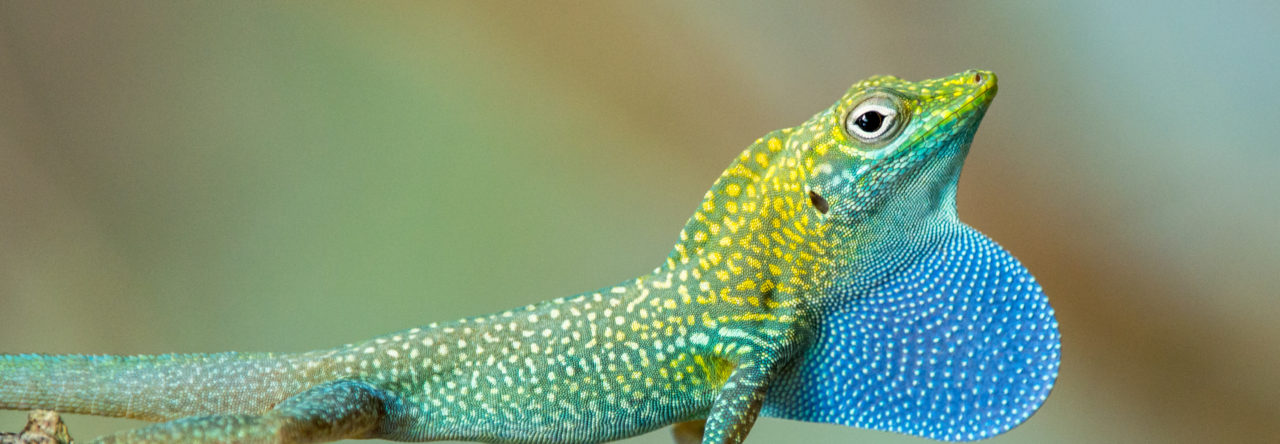
Photo from http://static.flickr.com/75/183141170_b188735c85.jpg
Vega-Castillo and Puente-Rolón in the December, 2011 issue of Herpetological Review report fruit consumption by A. gundlachi, A. stratulus and, most notably, the grass-bush A. krugi. This adds to recent reports of frugivory in three other Puerto Rican species, A. cuvieri, A. evermanni and A. monensis.
As I discussed in Lizards in an Evolutionary Tree, frugivory is quite common in anoles, but there are interesting ecological and biogeographical aspects:
“Many anole species are known to eat fruits at least occasionally, and in some species at some localities, frugivory is quite common (Herrel et al., 2004). Species known to be frugivorous are larger than those not known to eat fruits, and West Indian species are frugivorous more than mainland species (30% versus 0% in Herrel et al.’s [2004] survey). Among West Indian anoles, no grass-bush anoles and all crown-giants have been reported to be frugivorous; data for other ecomorphs is mixed. My hunch is that when more species are studied, almost all but the smallest species will be found to occasionally take fruit. For example, the fact that an A. evermanni, not definitively known to eat fruit, once jumped on my shoulder, ran down my arm, perched on my thumb, and bit at the red knob of the stop watch I was holding suggests to me that this trunk-crown anole will eat red berries, just like many other anoles. Seeds (Reagan, 1996) and “seeds or fruit” (Lister, 1981) have been reported in the diet of this species, so my prediction that it is frugivorous is not very daring.
Seed eating is also reported for a number of species (e.g., Wolcott, 1923; Reagan, 1996). In some cases, these seeds may have been ingested incidentally, but in other instances, seeds, which are digested more slowly than pulp, may be the last remaining trace of a fruity meal in the digestive tract of an anole.
Nectarivory has been reported in a number of West Indian trunk-crown anoles (Liner, 1996; Perry and Lazell, 1997; Campbell and Bleazy, 2000; Echternacht and Gerber, 2000; Okochi et al., 2006; Valido, 2006), a grass-bush anole (Perry and Lazell, 2006), and two Lesser Antillean species (Timmermann et al., 2008). The greater occurrence of frugivory and nectarivory among island species compared to those on the mainland agrees with a trend seen for lizards in general (Olesen and Valido, 2003).
Read More
 Nearly one week has passed since I entered the Bahamas in search of Anolis brunneus, the Crooked Island anole. Since then I have also been joined by Michele Johnson and two students to help study the behavior and ecology of this poorly known species. I am happy to report that the lizards are treating us well and copious amounts of data are being collected each day. There are several developments that I thought might be of interest to the readers of this blog.
Nearly one week has passed since I entered the Bahamas in search of Anolis brunneus, the Crooked Island anole. Since then I have also been joined by Michele Johnson and two students to help study the behavior and ecology of this poorly known species. I am happy to report that the lizards are treating us well and copious amounts of data are being collected each day. There are several developments that I thought might be of interest to the readers of this blog.









